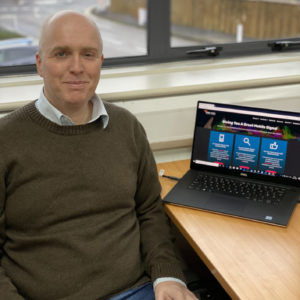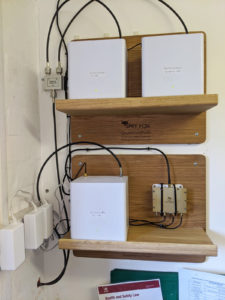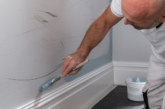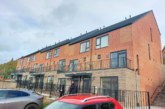 Stuart Waine at Spry Fox Networks explains why 4G coverage for the public sector is a necessity and not just a nice to have.
Stuart Waine at Spry Fox Networks explains why 4G coverage for the public sector is a necessity and not just a nice to have.
Ask any public sector organisation about their biggest challenges and they will invariably list the following: managing demand, struggling with outdated technology, consolidation of departments/services, budget cuts, commercialisation of services and forging relationships with the community. Consider this list carefully and it won’t take you long to realise that reliable mobile communications sits at the heart of their fulfilment, particularly where public safety is concerned.
As the health crisis pushes local authorities and hospitals to their absolute limits and with no let-up on the horizon, never has there been a greater need for uninterrupted voice and data coverage inside any commercial buildings to co-ordinate safety-critical communications and to mobilise first response teams.
Communications overhaul
Critical communication services are currently provided by Airwave using TETRA (Terrestrial Trunked Radio) technology. The advantage of this network is that it facilitates uninterrupted coverage in densely populated and rural areas alike, is able to penetrate thick building walls and is not blighted by coverage dead spots. Its downside, however, is that the network struggles to support high-bandwidth voice and data services because the upload and download times are just too slow, a consequence of the low frequency band used.
As such there is a cross party initiative led by central government to replace Airwave with a new Emergency Services Network (ESN) that will run over 4G. This means that blue light services, law enforcement organisations and first response teams will be able to take advantage of digital technologies like wearable cameras and live streaming video, and reduce dependency on outdated technologies such as pagers, fax machines etc. which cost £millions to run and maintain.
The in-building coverage challenge
While the network chosen to facilitate ESN is focussed on upgrading its existing outdoor infrastructure to meet the demand of the new critical communications network, a bigger challenge will be ensuring adequate levels of uninterrupted coverage inside public buildings. The higher frequency bands used for 4G have much shorter propagation ranges than legacy voice-based networks and indoor signal strength is invariably weakened because modern building materials severely hinder the transmission of 4G. This combined with complex layouts and underground locations causes coverage to become patchy and unreliable.
Hospitals and city/county council buildings are prone to having poor to non-existent 4G coverage due to the sheer number of internal corridors, offices, stairwells, basement areas etc. within, all of which are notorious mobile black spots. Poor coverage is frustrating at the best of times, poor coverage in the midst of an emergency could be catastrophic.
Taking the outside network indoors is easier than you think
The only way to overcome the 4G problem is to take the outside signal indoors using mobile signal boosters and antennas to amplify the 4G signal because mobile phone masts on their own are just not up to the job. The type of signal booster needed will depend on the size of the building in question; its location, how close it is to a mobile phone mast, the number of people requiring coverage, and the network(s) that need to be boosted.
This might sound like an arduous and expensive process with lengthy timescales, and up until about 18 months ago it was. However, in 2018 Ofcom relaxed the rules governing the usage of mobile signal boosting equipment, so implementing equipment to improve voice and data coverage is now a straightforward process. The only limiting factor is that any deployed system must satisfy all technical requirements stipulated by Ofcom in the IR2102 specification. This means it must be network-specific, network-safe and not cause interference to any other networks. Unfortunately, not all systems meet these stringent requirements.
 Ticking the regulator boxes
Ticking the regulator boxes
A product range that does tick all the boxes is available from mobile repeater specialists, Spry Fox Networks. The company works closely with the public sector and has recently installed an extensive end-to end system to facilitate high-speed voice and data coverage at the P&J Arena, managed by Aberdeen City Council.
What the future holds
It is becoming increasingly apparent that 4G is no longer a ‘nice to have’, but an integral requirement for every general mixed use, residential or commercial buildings for public safety purposes. What is unclear at this stage is where the responsibility lies. Nobody wants to be culpable by taking short cuts, and with no clear guidance on funding, NHS trusts and public sector organisations are faced with a moral dilemma in the short to medium-term.
Mobile connectivity has always been a moving target and will become even more so as 5G gains momentum and ESN goes mainstream. Forward planning from a property owner/manager’s perspective is therefore essential to satisfy immediate expectations and future requirements because failure to take this into account could have very serious consequences.









